A land lease agreement, also known as a ground lease or a land lease, is a document that allows a person or entity to lease land from its owner. This type of agreement is common in real estate transactions where the owner of a piece of land leases it to another party for a specified period. It’s essential to have a well-drafted lease agreement to avoid disputes and clearly outline the terms and conditions of the lease. In this blog post, we’ll explore the essential components of a form land lease agreement template, how to customize it for your specific needs, and the legal considerations you should keep in mind.
Introduction to Land Lease Agreements
A land lease agreement is a contract between a landowner (lessor) and a tenant (lessee) that allows the tenant to use the land for a specified period in exchange for rent payments. Unlike a typical rental agreement for a house or apartment, a land lease typically involves larger areas of land and longer lease terms. This type of agreement is often used for commercial, industrial, or agricultural purposes, where the lessee may build structures or make improvements on the land.
Components of a Form Land Lease Agreement Template
1. Parties Involved
The lease agreement should identify the lessor (landowner) and the lessee (tenant). Include their legal names and addresses. If the lessee is a corporation or LLC, provide its legal name and principal place of business.
2. Description of the Land
Provide a detailed description of the leased land. Include the physical boundaries, acreage, and any unique features or restrictions. Attach a map or survey if necessary to clarify the boundaries.
3. Lease Term
Specify the duration of the lease, including the start date and end date. You may also include provisions for renewal options if both parties agree to extend the lease.
4. Rent and Payment Terms
Outline the amount of rent due, the frequency of payments (monthly, quarterly, etc.), and the acceptable methods of payment. Specify any late fees or penalties for overdue payments.
5. Use of the Land
Describe how the land can be used by the tenant. This may include agricultural, commercial, residential, or industrial purposes. Outline any restrictions on the use of the land and the types of improvements the tenant can make.
Top Free Form Land Lease Agreement Templates:
Here are our specially curated Top Free Form Land Lease Agreement Templates, just for you!
***** Template Rated 1st *****
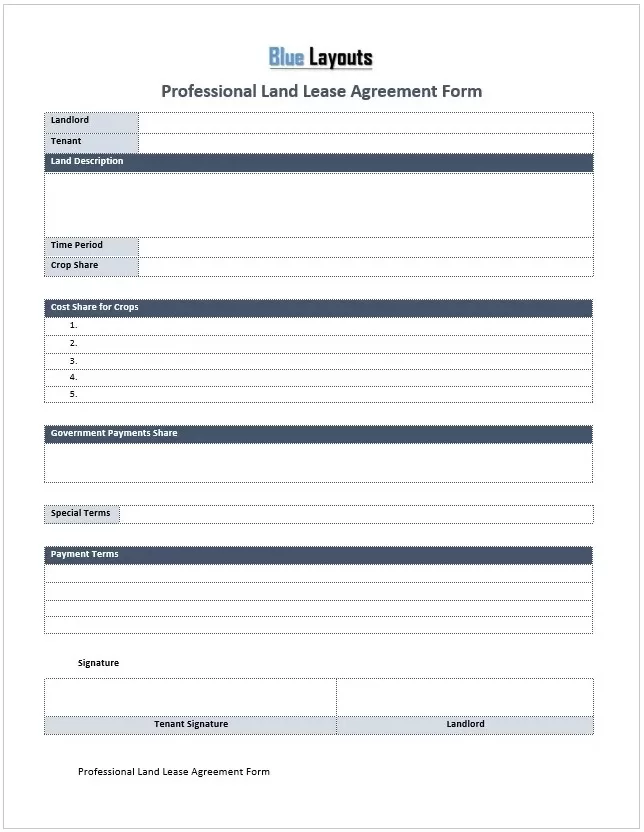
Source: bluelayouts.org
*** Template Rated 2nd ***
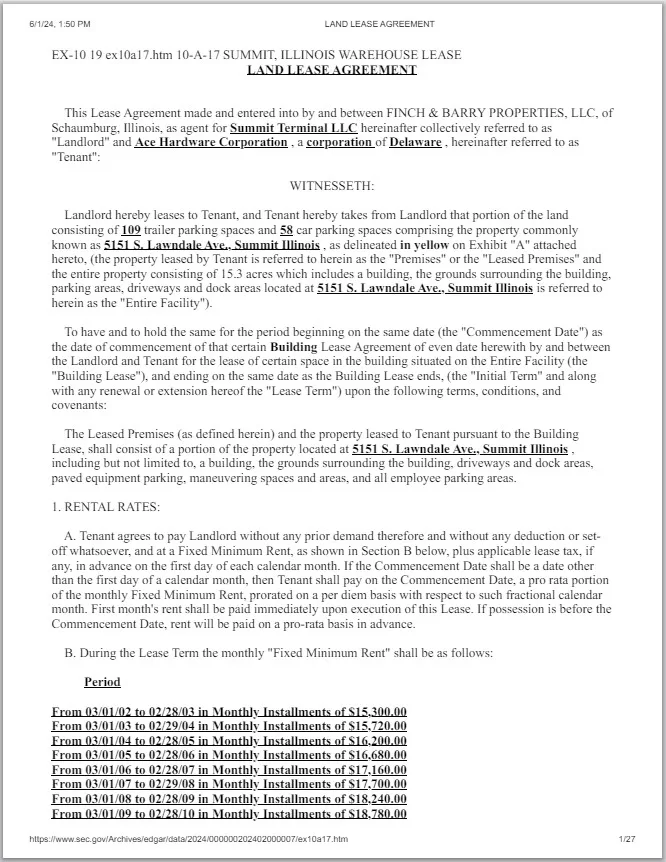
Source: sec.gov
*** Template Rated 3rd ***
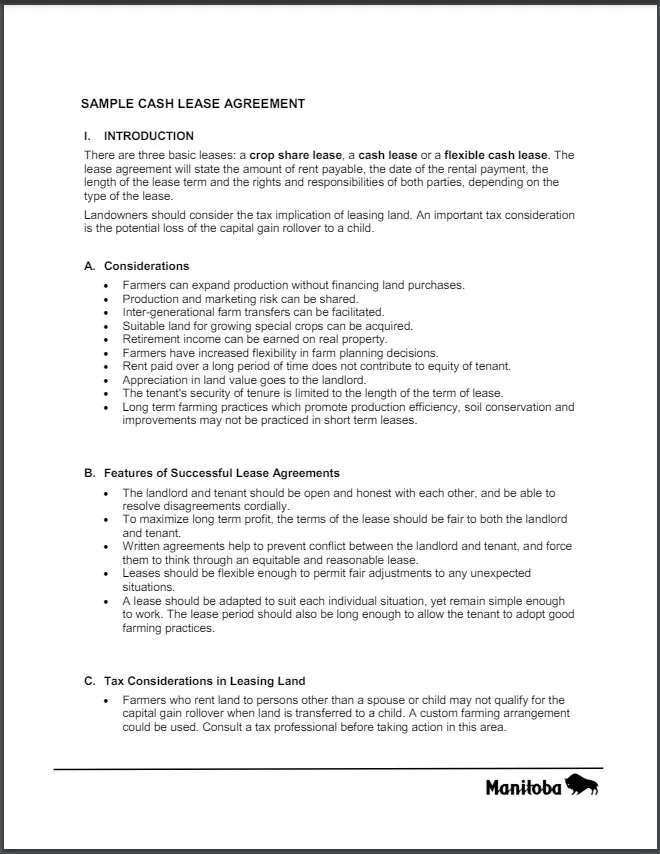
Source: gov.mb.ca
*** Template Rated 4th ***
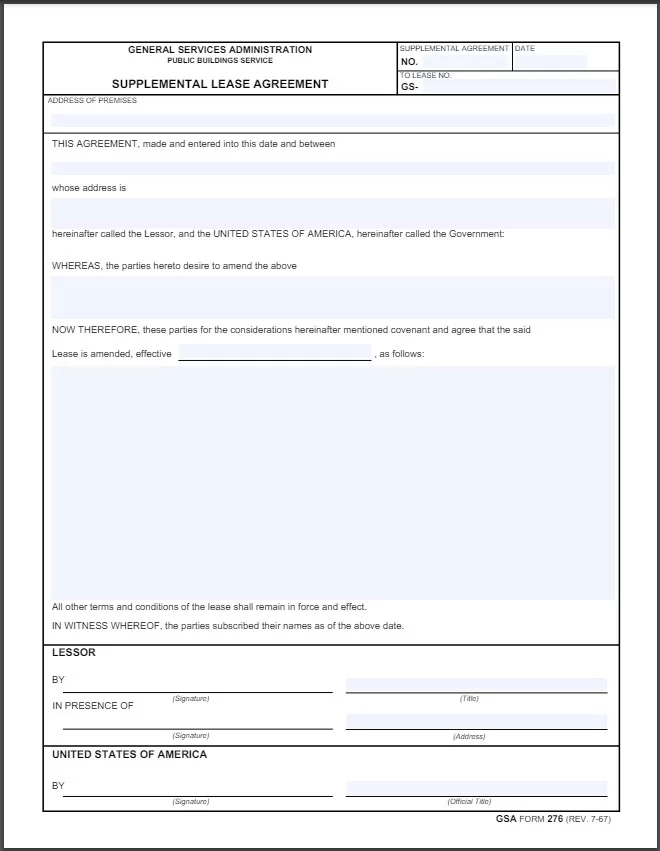
Source: gsa.gov
*** Template Rated 5th ***
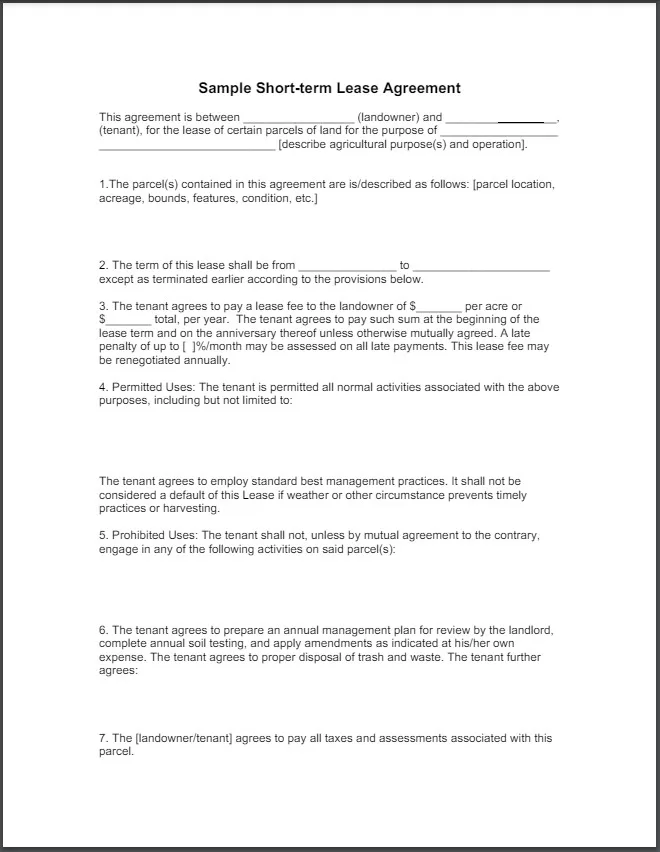
Source: landforgood.org
6. Maintenance and Repairs
Specify which party is responsible for maintaining the land and making repairs to any structures on the property. Outline procedures for notifying the landlord of necessary repairs and how costs will be allocated.
7. Insurance and Indemnity
Detail the insurance requirements for both parties. Typically, the tenant is required to carry liability insurance to protect against claims arising from accidents on the property. Include provisions for indemnifying the landlord against claims related to the tenant’s use of the land.
8. Taxes and Utilities
Clarify which party is responsible for paying property taxes, utility bills, and other expenses associated with the land. This may include taxes on improvements made by the tenant.
9. Default and Termination
Outline the circumstances under which the lease can be terminated, such as non-payment of rent or violation of lease terms. Specify any notice periods required before termination.
10. Miscellaneous Provisions
Include any additional provisions that are important to both parties, such as dispute resolution methods, assignment or subletting clauses, and environmental compliance.
Customizing the Template for Your Needs
When using a form land lease agreement template, it’s important to customize it to reflect the specific needs and circumstances of your lease agreement. Here are some tips for customizing your template:
- Local Laws and Regulations: Ensure that your lease agreement complies with local laws and regulations regarding land use and leasing.
- Specific Use Requirements: Tailor the use provisions to reflect the specific activities or improvements that will occur on the land.
- Unique Conditions: If there are unique conditions or restrictions related to the land, make sure they are clearly outlined in the agreement.
Legal Considerations
When drafting or reviewing a land lease agreement, consider seeking legal advice to ensure that the agreement is legally enforceable and protects your interests. Here are some legal considerations to keep in mind:
- Clear Language: Use clear and concise language to avoid ambiguity or misunderstandings.
- Local Laws: Ensure compliance with local zoning laws, environmental regulations, and other legal requirements.
- Tenant Improvements: Clarify who owns any improvements made to the land by the tenant and what happens to them at the end of the lease.
A well-drafted land lease agreement is essential for establishing clear expectations between a landowner and a tenant. By using a form land lease agreement template and customizing it to your specific needs, you can create a legally sound document that protects the interests of both parties. Remember to consult with legal professionals to ensure that your lease agreement complies with local laws and adequately addresses all relevant issues. With a carefully crafted lease agreement in place, both parties can confidently proceed with their respective interests in the land lease arrangement.

Jim Karter is a seasoned blogger with a profound interest in the intricacies of office document processes. With years of experience in the field, Jim has dedicated his career to helping individuals and businesses streamline their daily tasks through the use of efficient and practical templates. His passion for organization and productivity shines through in every piece of content he creates.
